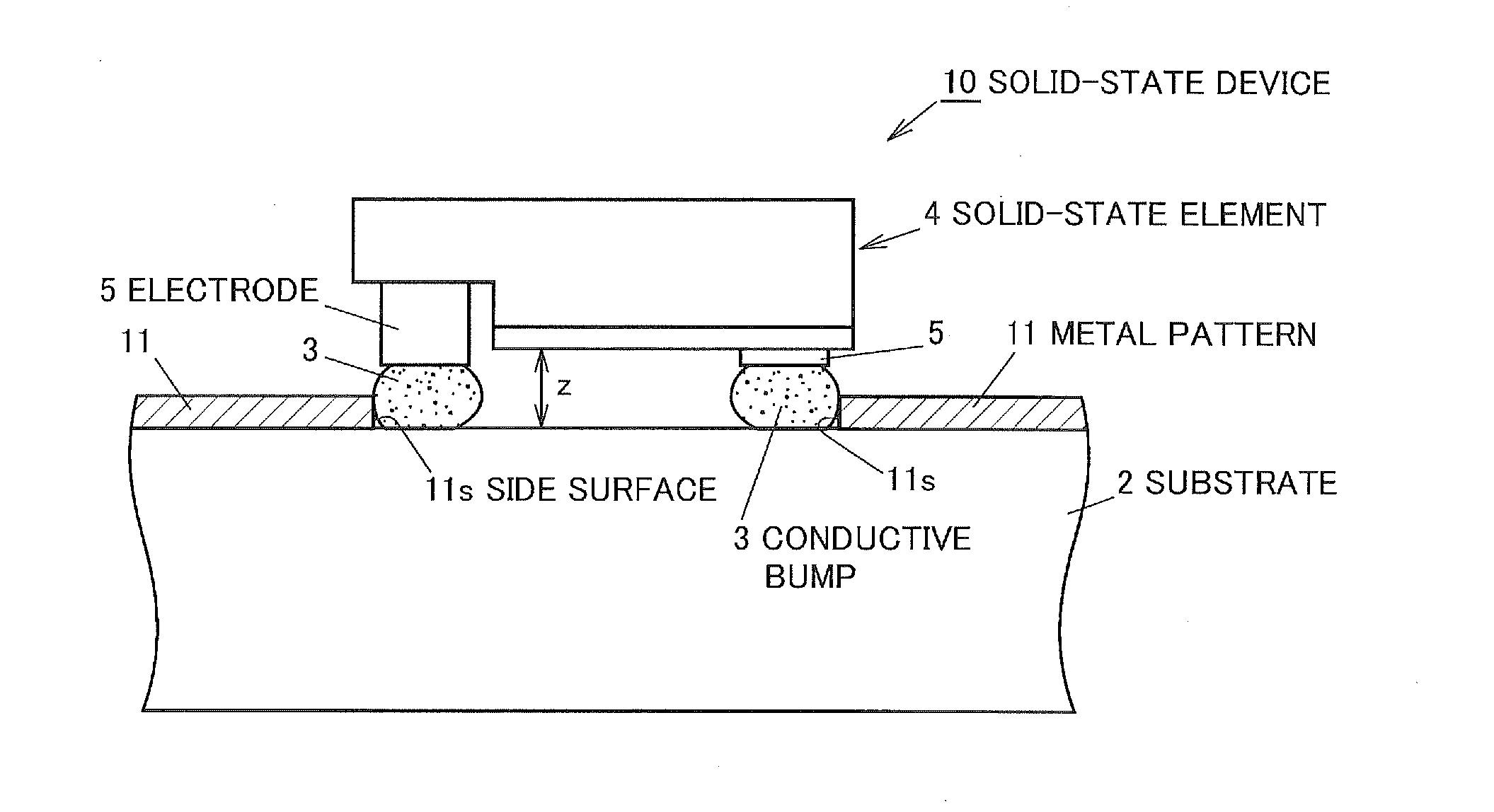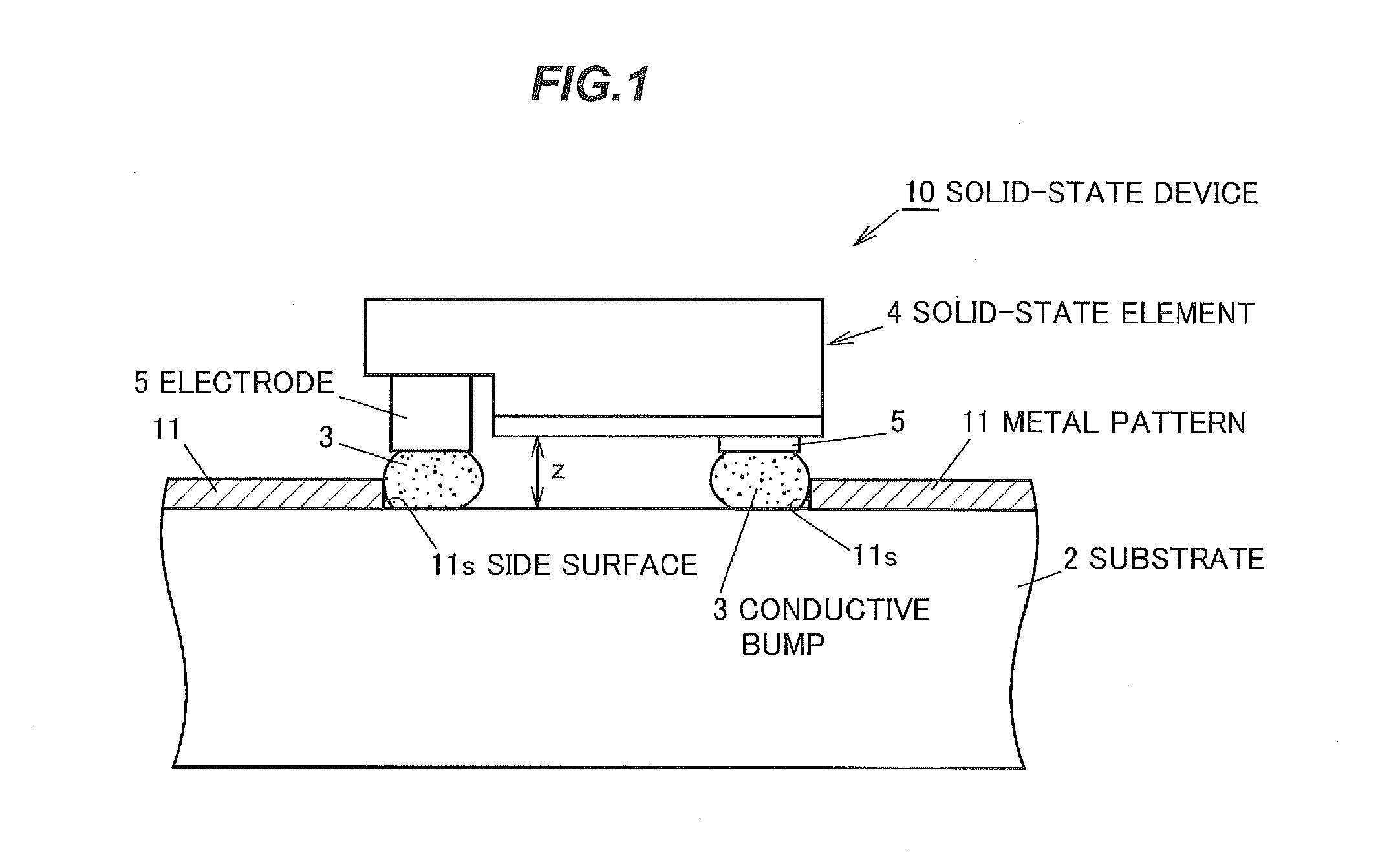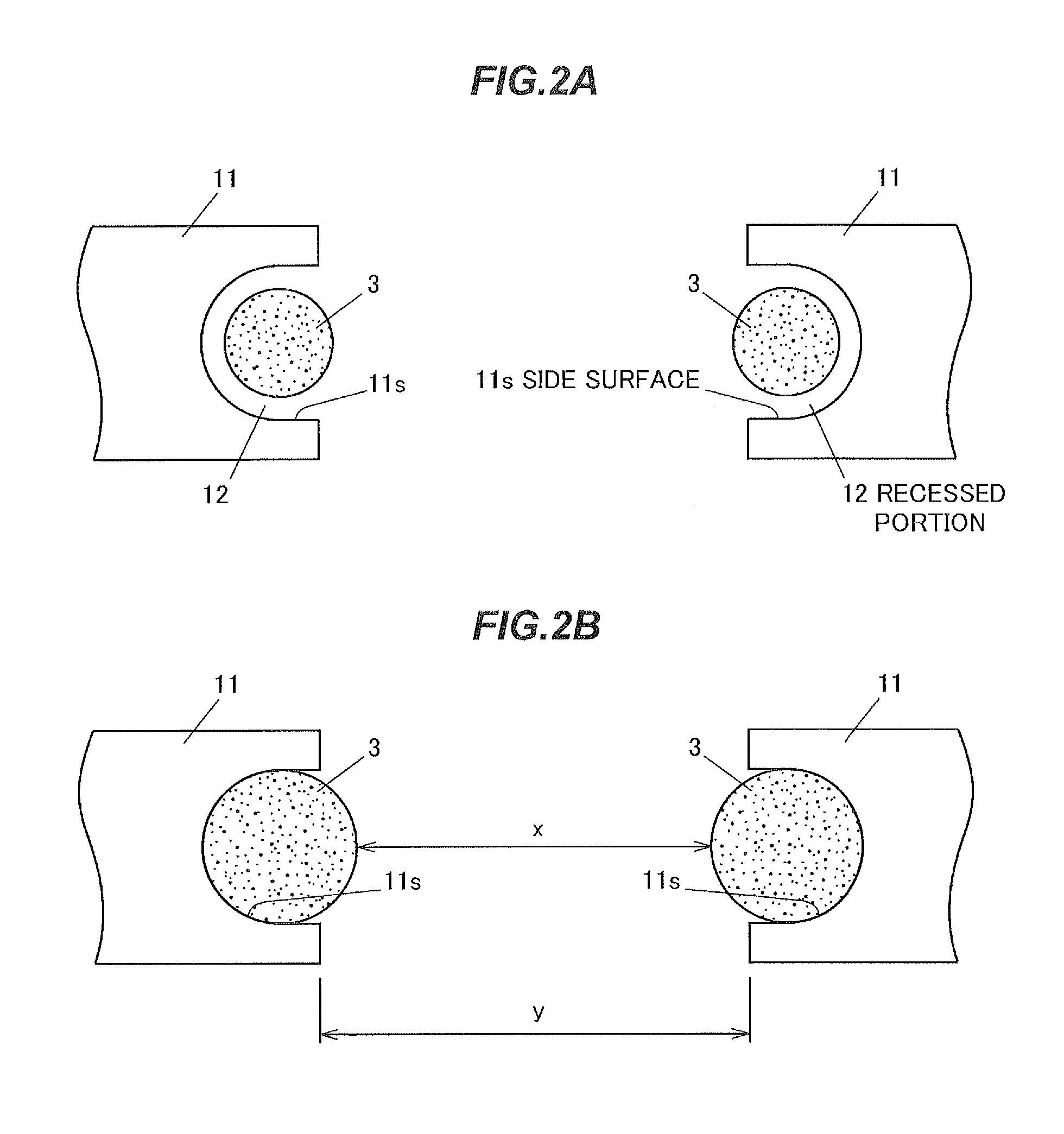Solid-state device and method of manufacturing the same
- Summary
- Abstract
- Description
- Claims
- Application Information
AI Technical Summary
Benefits of technology
Problems solved by technology
Method used
Image
Examples
first embodiment
[0048]Structure of Solid-State Device
[0049]FIG. 1 is a vertical cross-sectional view showing a portion of a solid-state device in the first embodiment. A solid-state device 10 has a substrate 2, a metal pattern 11 formed on the substrate 2 and a solid-state element 4 connected to the metal pattern 11 via a conductive bump 3.
[0050]The substrate 2 is formed of, e.g., polycrystalline alumina. It is possible to use polycrystalline alumina of which strength is enhanced by adding ZrO or polycrystalline alumina of which reflectance is enhanced by adding light scattering glass. Alternatively the substrate 2 may be formed of a high thermal conductivity member having a thermal conductivity of not less than 100 W / (m·k), such as AlN or Si3N4. In addition, when a process requiring a substrate to have heat resistance, such as hot-melting of low-melting-point glass to seal the solid-state element 4, is not carried out, it is possible to use a low-heat resistant substrate such as glass-epoxy substr...
second embodiment
[0069]The second embodiment is different from the first embodiment in the shape of the metal pattern and the position of the conductive bump. Note that, the explanation for the same features as the first embodiment will be omitted or simplified.
[0070]FIG. 7A is a vertical cross-sectional view showing a portion of a solid-state device 20 in the second embodiment FIG. 7B is a top view showing an end portion of a metal pattern 21 and the conductive bump 3 of the solid-state device 20.
[0071]A side surface 21s of the metal pattern 21 is inclined with respect to a vertical direction. When the metal pattern 21 is formed by, e.g., screen-printing and baking Ag paste, inclination is naturally formed after the printing. The Ag paste used for the screen-printing contains Ag particles having a diameter of, e.g., not more than 15 μm, and typically 5±2 μm, The thickness of the metal pattern 21 is, e.g., 10 μm.
[0072]The conductive bump 3 is formed such that a portion of the bottom surface is in co...
third embodiment
[0080]The third embodiment is different from the second embodiment in the shape of the metal pattern and an inclined angle of the side surface. Note that, the explanation for the same features as the second embodiment will be omitted or simplified.
[0081]FIG. 9A is a vertical cross-sectional view showing a portion of a solid-state device 30 in the third embodiment. FIG. 9B is a top view showing an end portion of a metal pattern 31 and the conductive bump 3 of the solid-state device 30.
[0082]The metal pattern 31 has a pointed triangular shape at an end portion to be connected to the solid-state element 4. In addition, a side surface 31s of the metal pattern 31 is inclined with respect to a vertical direction. When the metal pattern 31 is formed by, e.g., screen-printing Ag paste, the inclination of the side surface 31s is shallower than that of the side surface 21s of the metal pattern 21 in the second embodiment since the end portion of the metal pattern 31 has a triangular shape. Th...
PUM
 Login to View More
Login to View More Abstract
Description
Claims
Application Information
 Login to View More
Login to View More - Generate Ideas
- Intellectual Property
- Life Sciences
- Materials
- Tech Scout
- Unparalleled Data Quality
- Higher Quality Content
- 60% Fewer Hallucinations
Browse by: Latest US Patents, China's latest patents, Technical Efficacy Thesaurus, Application Domain, Technology Topic, Popular Technical Reports.
© 2025 PatSnap. All rights reserved.Legal|Privacy policy|Modern Slavery Act Transparency Statement|Sitemap|About US| Contact US: help@patsnap.com



